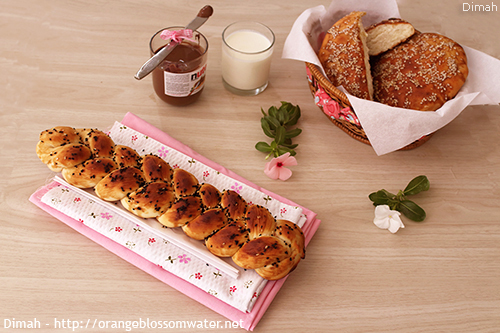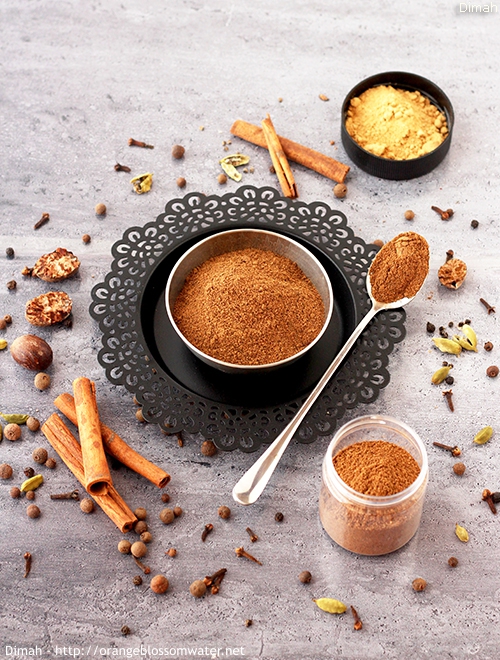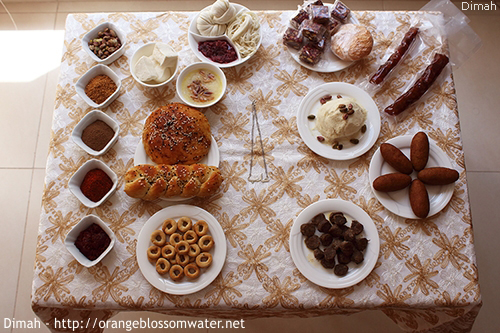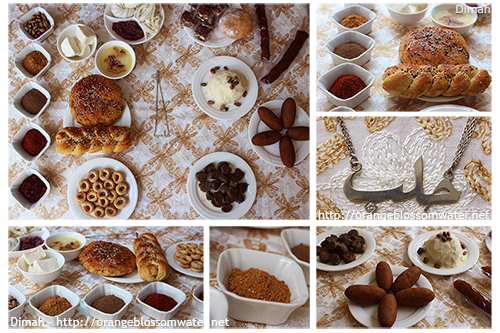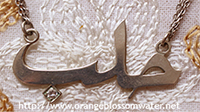Orange Blossom Water Turns Six!
February 28th, 2015
Today my blog celebrates its sixth birthday, I simply can’t believe I’ve been blogging for this long.
For this special day, I made “Ma’rouk Halabi” a sweet bread can be eaten plain or can can be stuffed with (cheese, date paste, chocolate, Nutella,…), this bread is a specially of Aleppo, I’ll post the recipe later.
Thank you everyone for your kind comments and emails, and thanks for following Orange Blossom Water, I really appreciate it.
To Aleppo With Love – Al-Bhar Al-Halabi
February 27th, 2015
Al-Bhar Al-Halabi (Bhar Al-Daqqah Al-Halabi) is Aleppine seven-spice blend which belongs to Aleppo city. Bhar means “spices”, Halabi means “From Aleppo”, Aleppo in Arabic is “Halab”, and “Halabi” is derived from “Halab”. Al-Bhar Al-Halabi is widely used in Aleppine dishes.
Let’s make Al-Bhar Al-Halabi:
To Aleppo With Love – Introduction, Part 2
January 24th, 2015
Syrian cuisine in general, and especially Aleppine cuisine, has a very wide selection of dishes. Being surrounded by olive, nut and fruit orchards, Aleppo is famous for a love of eating, as the cuisine is the product of fertile land and location along the Silk Road. The International Academy of Gastronomy in France awarded Aleppo its culinary prize in 2007. But in fact, Aleppo was a food capital long before Paris, because of its diverse communities of Arabs, Kurds, Armenians, Circassians and a sizable Arab Christian population. All of those groups contributed food traditions, since Aleppo was part of the Ottoman Empire.
Aleppo prides itself on the best cuisine in the Middle East, the city has a vast selection of different types of dishes, and this post is just a brief introduction about Aleppine cuisine, everything here (dishes, or ingredients) are specialty of Aleppo.
To Aleppo With Love – Soon
January 3rd, 2015
Aleppo (in Arabic: Halab and written like this: حلب) is the largest city in Syria, and the oldest city in the world (over 12,200 years old). I was born in Hama, and I lived part of my childhood in Aleppo.
Before the terrible war on my country Syria and four years ago, Aleppo was a thriving, cosmopolitan place. But since 2012, Aleppo is exposed to destruction, and the losses in ancient and modern city are tremendous, it is heartbreaking.
I’ll start a series called “To Aleppo With Love إلى حلب مع حبي” and I’ll post Aleppine dishes, this series of new posts is dedicated from me and my family to great Aleppo.
Watch the blog for updates…To Aleppo With Love – Soon !
Click on picture for larger image.
